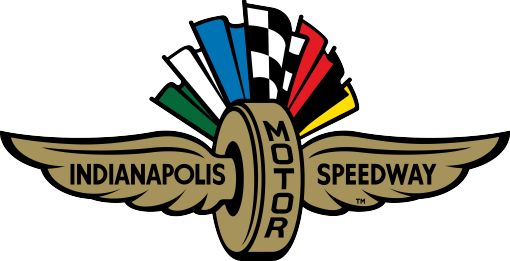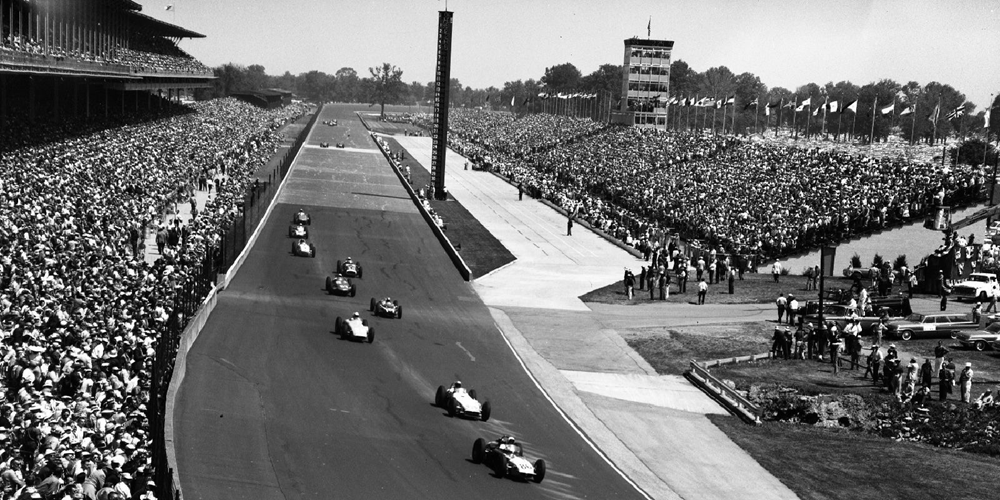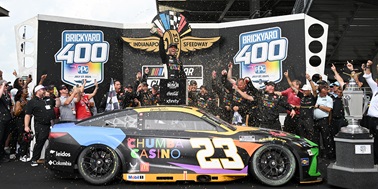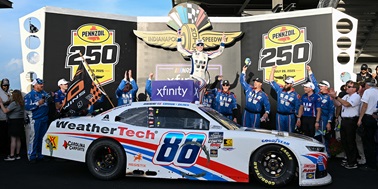1960
Three-time runner-up Jim Rathmann was finally rewarded with a victory in perhaps the greatest “500” ever held.
Just when it appeared as if Rathmann may have to finish runner-up for a record fourth time, Ward began to slow down. White cords were starting to show through on his right front tire, but the experience of thousands of miles of tire testing told him he could slow down and still save second rather than lose further positions through making a pit stop.
The sensation of qualifying was “rookie” Jim Hurtubise, who came within a blink of an eye of turning the first-ever 150-mph lap. He recorded 149.601 mph on one lap and averaged 149.056 mph for the four of them, breaking the recently set track record of pole-sitter Eddie Sachs by two and half miles per hour.
1961
In another of the greatest “500s” ever held, 26-year-old A.J. Foyt won his first of four “500s,” holding off pole-sitter Eddie Sachs by a little over eight seconds.
After an extremely exciting first half involving several leaders, it developed into a classic seesaw struggle between these two. When Foyt made his third and final scheduled stop, however, his refueling mechanism malfunctioned and, unbeknownst to him, he was not given a full load.
Now running “light,” he was able to build a steady lead over the bewildered Sachs, who wore down his tires at a greater rate in an effort to stay with Foyt. An emergency fuel stop by Foyt at 184 laps gave the lead to Sachs, but the desperate chase had taken its toll on Sachs’ right rear tire and he was obliged to stop for a change with only three laps to go.
Finishing ninth was defending two-time World Champion Jack Brabham, whose slightly modified British-built F1 Cooper–Climax was the first rear-engined car ever to have finished.
1962
With the remaining few hundred yards of exposed brick surface on the main straight having been paved over with asphalt the previous October, the long-awaited breaking of the 150 mph “barrier” was finally achieved by sophomore “500” driver Parnelli Jones.
He lapped in excess of 150 mph on all four of his qualifying laps. Parnelli also set a record-breaking pace during the race and was well ahead at the 300-mile mark when his brakes failed.
Amazingly enough, he kept running and in spite of the challenge of making his final pit stop—deliberately brushing the pit wall with his left side wheels in order to slow down—he still managed to place seventh. Rodger Ward and Len Sutton finished one–two for Bob Wilke’s Leader Card Racers, a feat matched by no other team for the next 35 years.
1963
There was quite a controversy in the closing stages when vaporized drips of oil began to seep from the externally mounted oil tank on the side of the leading car, driven by record-holding pole-sitter Parnelli Jones.
Running a close second—and having made only one pit stop to Parnelli's three—was Scotsman Jim Clark, who was making his "500" debut, driving a British rear-engined Grand Prix–based Lotus, powered by a stock-block Ford V8 engine, equipped with a carburetor and running on gasoline.
Clark backed off in anticipation of a possible black flag which was never shown, the seepage having stopped in the meantime. He settled for second. In spite of much passionate discussion among fans and media, Clark was never anything but highly complimentary of Jones, and the two of them bonded as brothers.
1964
Tragedy struck near the end of the second lap when a huge accident took place on the main straight, stopping the race for the first time ever for a reason other than rain. Two drivers, Eddie Sachs and Dave MacDonald, both perished in the fiery accident, which basically ended the use of gasoline as a fuel in the “500.”
With rear-engined cars now truly getting a foothold—they occupied the entire front row—and with rapidly improving tire development, Scotland’s Jim Clark raised the qualifying records by almost eight miles per hour to sit on the pole at 158.828 mph.
The race, however, was a triumph for A.J. Foyt in a traditional Offenhauser-powered Watson “roadster,” although this would mark the very last occasion on which a front-engined car would enter victory lane.
1965
History was made when a rear-engined car won for the first time, the popular Scottish driver Jim Clark leading for 190 of the 200 laps with a factory-entered Lotus, powered by a double-overhead-camshaft V8 Ford engine.
The only laps Clark did not lead were lap two, when A.J. Foyt edged ahead with a similar Lotus, and then for nine more when Foyt led as Clark made his first of two pit stops, both of which were conducted with great speed by NASCAR's legendary Wood Brothers.
Because the pace was slowed by incidents only a couple of times, Clark managed to average 150.686 mph, which was faster than the Parnelli Jones qualifying milestone of only three years earlier.
1966
Driver after driver ran into misfortune while leading this race, including pole-sitter Mario Andretti, defending winner Jim Clark, crowd favorite Lloyd Ruby and rising Grand Prix star Jackie Stewart.
It appeared that Stewart, an Indianapolis “rookie,” was headed for victory until he stopped at the north end of the track with less than ten laps to go. He tried pushing his stricken car for a short while, but finally gave up and came walking in to a huge ovation as former World Champion Graham Hill, his own teammate, led the final ten laps to win.
A huge accident had eliminated one-third of the field at the very start, miraculously the only injury being a cut thumb suffered by A.J. Foyt as he scaled the outer fence.
1967
The rain-interrupted 1967 race, which took two days to run, resulted in a last-minute win for A. J. Foyt, who tied with Louis Meyer, Wilbur Shaw and Mauri Rose as the only three-time winners of the "500" at that time. But all of this was completely overshadowed by the participation of a revolutionary and widely publicized car, which led almost the entire distance only to fail within sight of the finish.
Employing aircraft-type construction and four-wheel drive, the Andy Granatelli–conceived, Parnelli Jones–driven vehicle was powered by a Pratt & Whitney gas turbine engine. Starting sixth, the car had a healthy lead in less than half a lap and effectively led from that point on, giving up only for pit stops until lap 197, when a bearing (valued at $6) failed in the rear end.
No sooner had Foyt taken the lead than there was further drama, a multi-car accident developing at the north end of the main straight just as Foyt was coming around for the finish. He was able to pick his way through the debris and past the spinning cars, starter Pat Vidan already waving the checkered flag with one hand and a red flag with the other.
1968
For the second consecutive year, a gas turbine–powered car dropped out while leading in the final laps. This time it was former motorcycle champion Joe Leonard who was stranded, the Pratt & Whitney rear-mounted engine in his wedge-shaped Lotus suffering a “flameout” only nine laps from the finish.
Into the lead swept Bobby Unser, on his way to the first of his three “500” victories as well as to the first ever for an engine outfitted with a turbocharger. Unser, who battled for much of the distance with pole-sitter Leonard and perennial “hard luck” driver Lloyd Ruby, had to overcome a major obstacle in the second half. Having lost all but top gear, he demonstrated extraordinary skill on his final two pit stops by being able to pull out and get up to speed without stalling.
Dan Gurney, whose company built the Eagle chassis driven to the win by Unser, finished second in an Eagle of his own, this one powered by a “stock-block” Ford engine utilizing a Weslake head. Ever the innovator, Gurney was also debuting the very first full-face helmet to be used here, while, at the other extreme, the early exit by Jim Hurtubise marked the final appearance for a front-engined car in an Indianapolis 500.
1969
Considered long overdue for a “500” win, in spite of being in only his fifth start, Mario Andretti cruised to victory in a car he never expected to be driving.
A clear favorite to win the pole, he’d pushed a radical four-wheel-drive Lotus/Ford to an unofficial 172 mph during practice prior to totally destroying it in a horrendous single-car accident. It was an older Brawner Hawk, entered merely to obtain extra garage space, which ended up winning the race.
An extremely competitive first half saw all of the top contenders either drop out or else fall behind with mechanical problems, leaving Mario to fight it out with Lloyd Ruby. By lap 105, the star-crossed Ruby was gone too, a gaping hole ripped in the side of his fuel tank when he had unintentionally inched forward before the hoses were disconnected on a pit stop.
Mario nursed his badly overheating car the rest of the way to arrive two minutes ahead of Dan Gurney’s stock-block Ford and to find himself momentarily overwhelmed by the emotional celebration of Andy Granatelli, his flamboyant car entrant.




